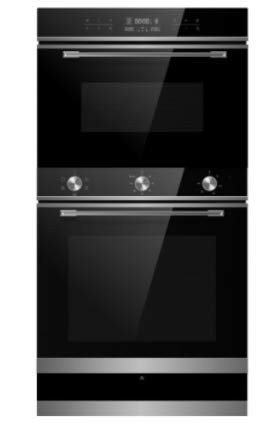Understanding Hobs and Ovens: The Essential Kitchen Appliances
In the realm of kitchen appliances, few products are as necessary as hobs and ovens. These devices form the foundation of culinary activities, allowing people to develop whatever from simple meals to elaborate banquets. Understanding the differences, types, and performances of hobs and ovens can significantly enhance one's cooking experience. This short article explores the complexities of hobs and ovens, offering insights that deal with both amateur and experienced cooks.
What Is a Hob?
A hob, typically described as a cooktop or stove top, is the flat surface area on which pots and pans are put for cooking. Hobs are geared up with heating aspects that produce the required heat for cooking food. Best Oven And Hob can be found in different kinds, consisting of gas, electric, induction, and ceramic alternatives. Each type provides special advantages and disadvantages.
Kinds of Hobs
Gas Hobs:
- Heat Source: Natural gas or propane.
- Benefits: Instant heat control and responsiveness, preferred by many chefs for accurate cooking.
- Downsides: Requires a gas connection and can be less energy-efficient.
Electric Hobs:
- Heat Source: Electric coils or smooth glass-ceramic surface areas.
- Benefits: Generally much easier to clean, even heating, and extensively available.
- Disadvantages: Slower to warm up and cool off compared to gas.
Induction Hobs:
- Heat Source: Electromagnetic currents.
- Benefits: Quick heating, energy-efficient, and only heats up the cookware, not the surrounding surface.
- Downsides: Requires suitable cookware (ferrous products).
Ceramic Hobs:
- Heat Source: Electric and has a smooth glass surface.
- Benefits: Sleek look, simple to tidy, and even heating.
- Disadvantages: Can take longer to warm up and cool off.
What Is an Oven?
An oven is an enclosed appliance that cooks food by surrounding it with dry heat. Ovens can be standalone systems or integrated with hobs in a single appliance known as a variety. Ovens are flexible tools that can be utilized for baking, roasting, broiling, and more.
Types of Ovens
Traditional Ovens:
- Heat Source: Electric or gas.
- Benefits: Good for standard baking and roasting.
- Disadvantages: Can have unequal heat circulation.
Convection Ovens:
- Heat Source: Electric or gas with a fan for flowing air.
- Benefits: More even cooking and faster cooking times due to airflow.
- Downsides: Can be pricier and might require adjustments in cooking times.
Microwave Ovens:
- Heat Source: Microwaves.
- Advantages: Quick cooking and reheating; great for defrosting.
- Disadvantages: Can not brown or crisp food well.
Steam Ovens:
- Heat Source: Steam generation.
- Advantages: Retains nutrients and moisture in food, healthier cooking option.
- Drawbacks: Longer cooking times and usually greater cost.
Secret Differences Between Hobs and Ovens
While hobs and ovens serve the main purpose of cooking food, their performances and utilizes vary significantly. The following table sums up these crucial distinctions:
| Feature | Hob | Oven |
|---|---|---|
| Cooking Method | Direct heat | Enclosed heat |
| Primary Use | Boiling, sautéing, frying | Baking, roasting |
| Heat Source | Gas, electric, induction | Gas, electric, steam |
| Cooking Area | Flat surface area | Enclosed area |
| Cooking Time | Usually much faster | Varies based upon dish |
| Control & & Precision | Immediate and direct | Relies on settings and timers |
Advantages of Using Hobs and Ovens Together
Integrating using a hob and an oven can greatly improve the cooking procedure. Here are some benefits:
- Versatility: Different kinds of food can be cooked all at once.
- Efficiency: Using both permits numerous cooking techniques, such as searing on the hob and baking in the oven.
- Time-Saving: Multi-tasking can substantially lower total cooking time.
Upkeep and Care
To guarantee the longevity of hobs and ovens, regular upkeep is important. Here are some ideas:
For Hobs:
- Clean spills instantly to avoid staining.
- Use appropriate cleaners for specific products (e.g., ceramic cleaner for glass-ceramic hobs).
- Routinely check gas connections for leaks (for gas hobs).
For Ovens:
- Wipe down the interior after each usage to prevent build-up.
- Usage self-cleaning features if offered, or use oven cleaners for difficult discolorations.
- Regularly examine seals and gaskets for wear and tear (to preserve heat performance).
Frequently asked questions About Hobs and Ovens
1. What is the best kind of hob for a beginner cook?
Response: A ceramic or electric hob is typically recommended for novices due to alleviate of use and cleaning.
2. Can Electric Oven & Hob utilize any cookware on an induction hob?
Answer: No, induction hobs need cookware made from magnetic products (e.g., cast iron or stainless-steel).
3. How frequently should I clean my oven?
Response: It is recommended to clean your oven every couple of months, or more regularly if you utilize it frequently.
4. Is it better to bake in a stove?
Response: Yes, convection ovens are often better for baking as they supply even heat circulation. Nevertheless, some delicate dishes may gain from traditional ovens.
Comprehending the performance and distinctions in between hobs and ovens is vital for any cooking enthusiast. Whether one chooses the instant heat of a gas hob or the precision of an induction cooktop, each type uses special benefits. Similarly, ovens differ widely in function, from traditional baking to steam cooking. By appreciating these appliances' functions in cooking, cooks can improve their culinary skills and improve their kitchen activities.

